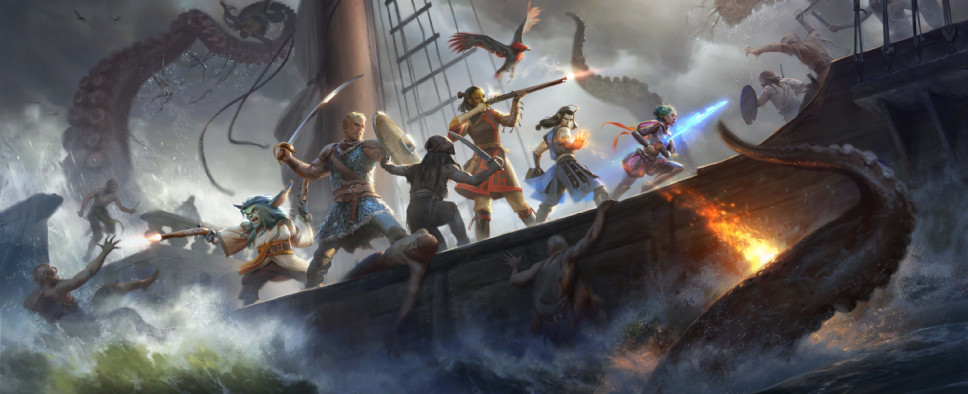Josh Sawyer on Building Pillars of Eternity II: Deadfire and Updating Tradition
-
Category: News ArchiveHits: 1568

A couple weeks ago, Obsidian Entertainment's Josh Sawyer participated in a Gamasutra livestream where he talked about Pillars of Eternity II: Deadfire and his particular brand of game design. Bits and pieces of that livestream have now been transcribed into this interview-style article that focuses on Deadfire's roots in the widely beloved Infinity Engine games and Obsidian's attempts to balance tradition with innovation. An excerpt:
Sawyer has been playing around with updating Baldur’s Gate since before Pillars, back when he was working on the first Icewind Dale in 2001 (he joked about how he began prototyping Pillars back then during the stream). He and his team try to consider two things when making a change to the formula: will it improve the game and what does the community want?
“In Deadfire, we changed a lot of mechanics based on feedback,” he explained. “The iteration process is mostly looking at the Infinity Engine games, trying to see if there were lessons that we could learn to improve on them, making some mistakes, trying to correct those mistakes and just iterating with the community."
Obsidian has already made some tweaks based on feedback. They made modding easier between the two Pillars, for example, and are also working on fixing the difficulty curve for players who want more of a challenge.
Sawyer knows well that a lot of his target audience, while wanting new experiences, will expect certain things out of Deadfire. The party will be of a certain size, for example, or there’ll be a large amount of dialogue and prose to flesh out the world. At a talk in Croatia, he got in a bit of trouble for insinuating that RPG fans could go to the extreme and become “unreasonable.”
“I understand that not all RPG fans are unreasonable... but especially with a game that is a throwback, it's supposed to appeal to more traditional tastes and styles,” he explained.
So how do you prevent yourself from going too far away from audience desires? Sawyer said you have to ask yourself a couple questions: what’s the point of the change and will it improve the experience?
“We don't try to change things just for the sake of changing things,” he said. “I try to think very carefully about what the advantages and disadvantages of staying the same way are versus changing it. Ultimately if I feel like the audience is going to have a more enjoyable game by making a change that's not like the original games, then I'm probably going to push to do that. That being said there's only so much you can change per game before it doesn't really start to feel like the things that inspired it.”

